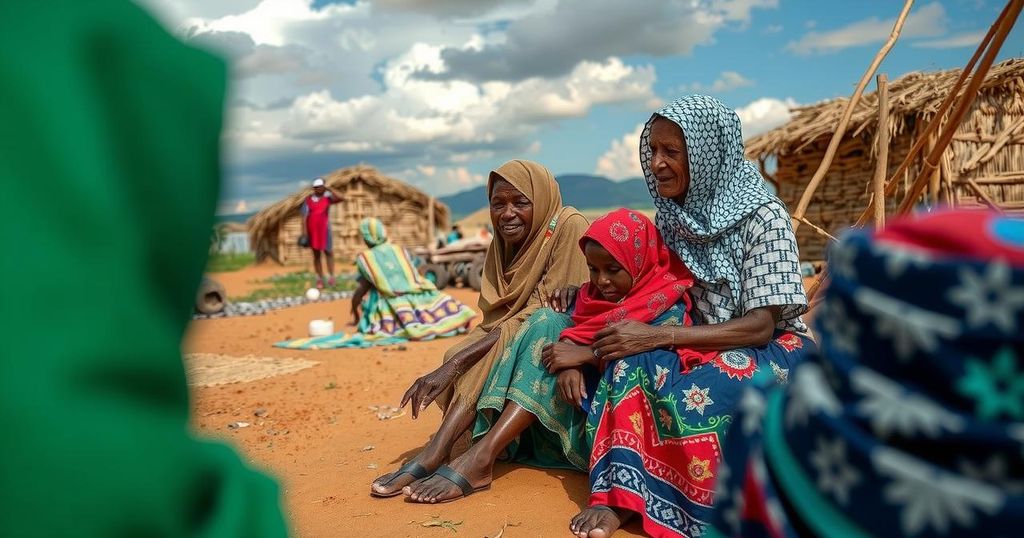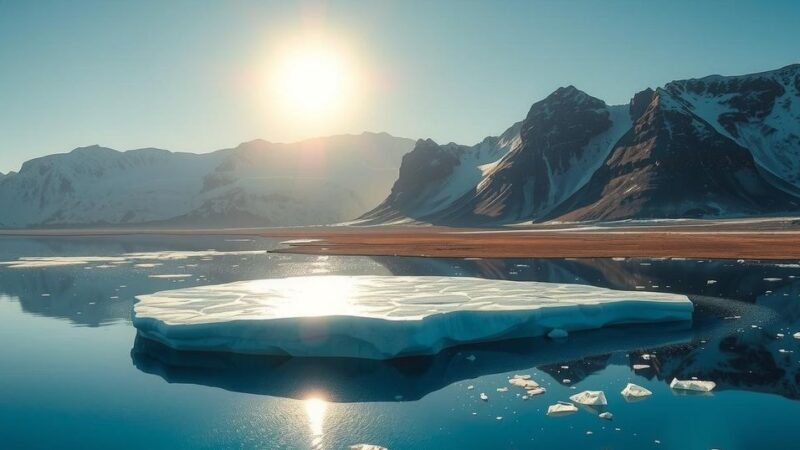The Dadaab Refugee Camp is experiencing a surge of Somali climate refugees due to severe flooding and droughts linked to climate change. The Environmental Justice Foundation has published a report illustrating the connections between global warming and increasing displacement. With a drastic rise in camp population and widespread food insecurity, immediate global intervention is vital to address this humanitarian crisis and protect those affected by climate disasters.
In 2024, the Dadaab Refugee Camp in Kenya has witnessed a significant influx of Somali climate refugees due to catastrophic flooding across the Horn of Africa. A new report from the Environmental Justice Foundation (EJF) connects global warming with a worrying increase in climate-induced migration. Over the past decade, the rise in extreme weather events has propelled internal displacement within countries, escalating from an average of 23.6 million annually between 2013 and 2023 to 32.6 million in 2022. In Dadaab, the camp’s population has surged from 234,000 in July 2022 to 320,000 by March 2023, as many have fled their homes due to drought and conflict. The EJF report highlights how global climate change, a crisis primarily caused by industrialized nations, severely impacts regions like the Horn of Africa, despite their minimal contributions to carbon emissions. For instance, Somalia’s per capita carbon footprint in 2019 was just one-fifth of the European Union’s. Climate forecasts suggest that recurrent droughts in the region are now substantially more probable due to human-induced changes, creating dire situations for local populations. Testimonies from the camp illustrate the desperate conditions faced by families. Halima Hassan Ibrahim, a mother of seven, recounted the loss of her livestock and the devastating impact on her family’s survival. In addition to the droughts, the following heavy rains introduced outbreaks of disease and worsened food insecurity, with millions in the region under acute threat. The situation remains critical, and without international aid and intervention, the plight of these climate refugees will continue to deteriorate. Steve Trent, the CEO of EJF, emphasized the moral imperative for a global response, stating that the crisis stems from choices made by those prioritizing profit over human life. He calls for legal frameworks to protect climate refugees as their suffering contrasts sharply with the failures of leaders to implement urgent changes. Fardowsa Sirat Gele, a reporter, underscored the inequity of this crisis, arguing that the most vulnerable, who contribute the least to the problem, are suffering its worst impacts. Their plight demands immediate action and compassion on a global scale to ensure a sustainable future for all.
The documentation of climate refugees emerging from the Horn of Africa stems from a nexus of extreme weather events exacerbated by climate change, resulting in widespread displacement and severe humanitarian crises. Dadaab Refugee Camp, established to provide refuge to those escaping war, is now a focal point for those fleeing climate catastrophes. The EJF’s findings portray not only the statistics of displacement but also the profound human stories underlying these figures, calling attention to the urgency of climate action.
The influx of Somali climate refugees into Dadaab is a troubling manifestation of the broader impacts of climate change. The EJF’s report sheds light on the desperate conditions of these individuals alongside the urgent need for international interventions to safeguard their rights and lives. As global temperatures continue to rise, it becomes increasingly imperative for world leaders to acknowledge their responsibility and implement measures to mitigate the effects of climate change, ensuring protection for the most vulnerable populations.
Original Source: ejfoundation.org






